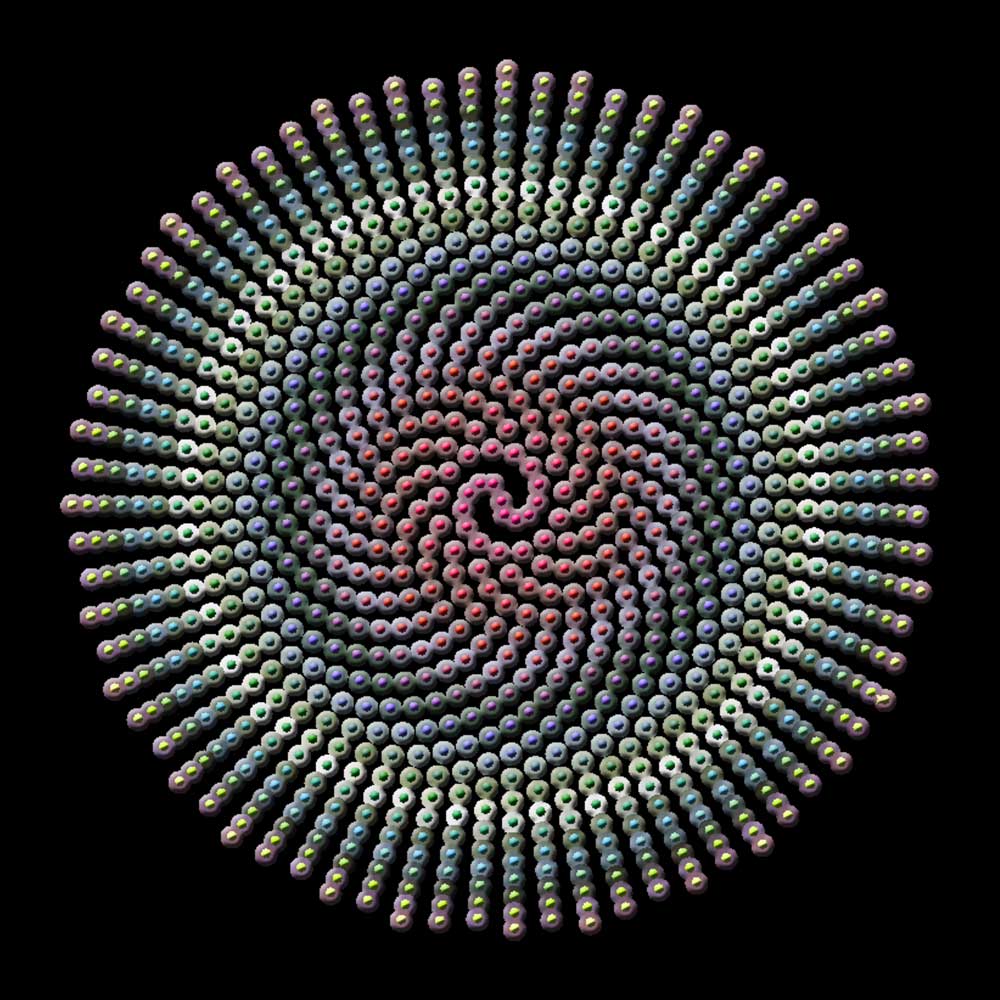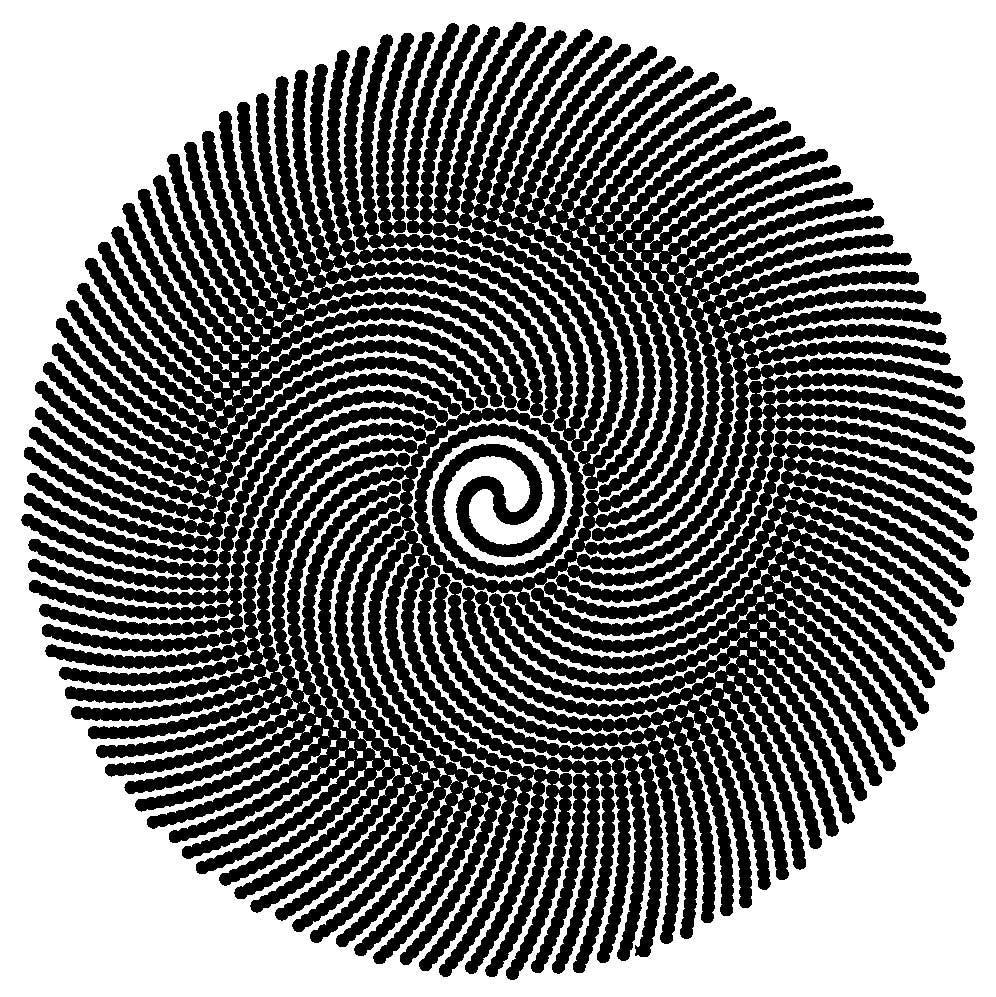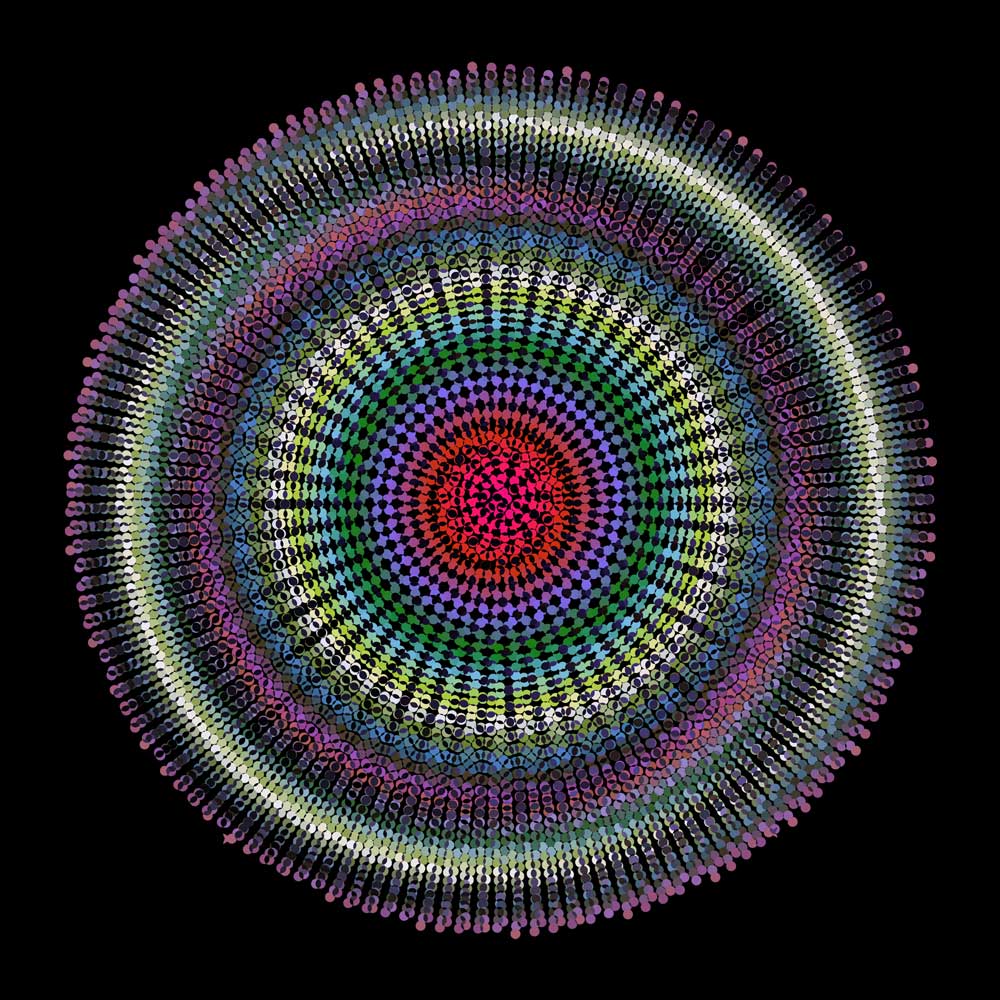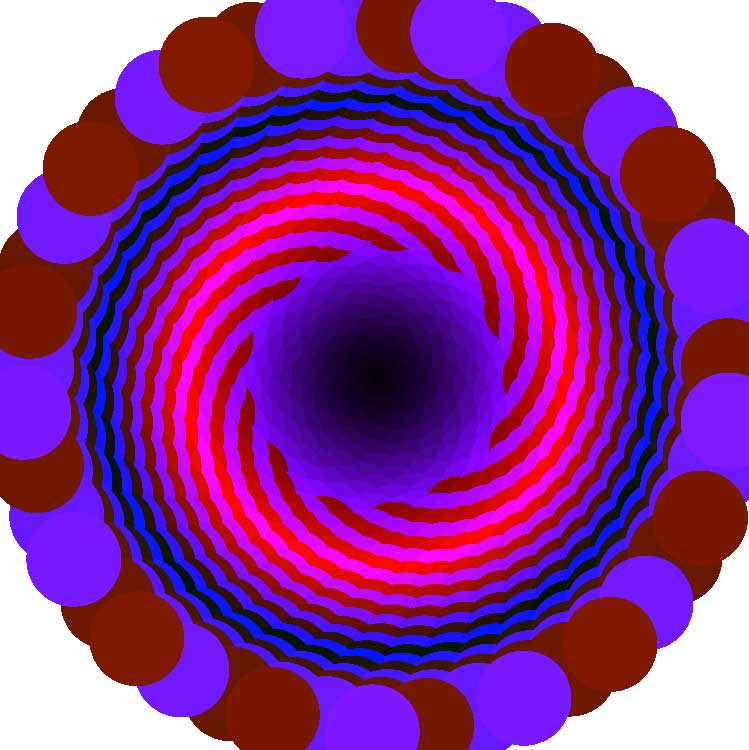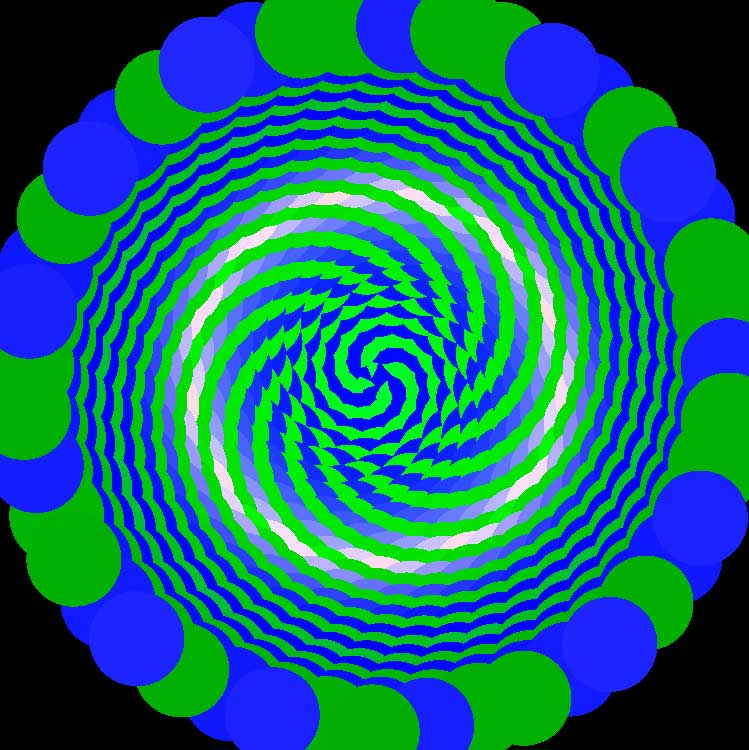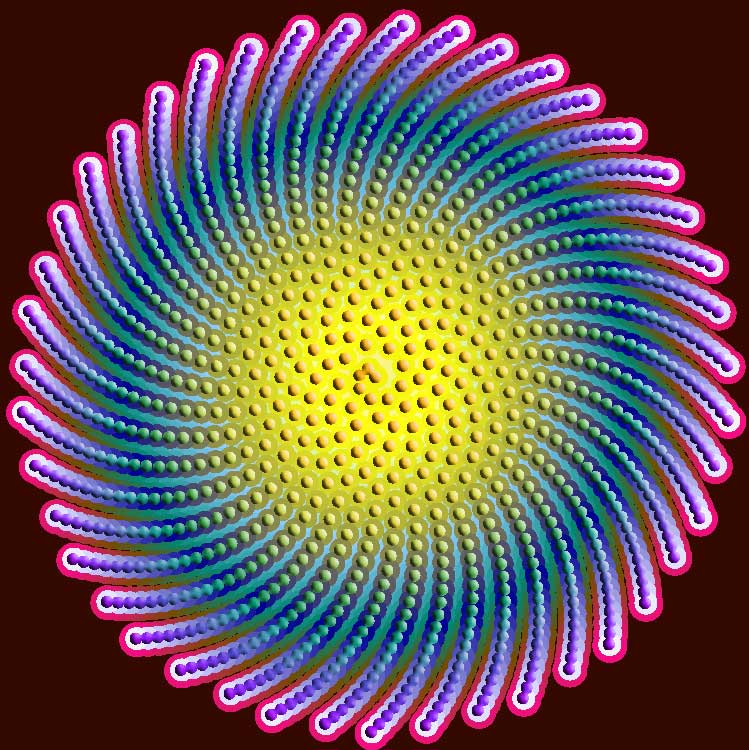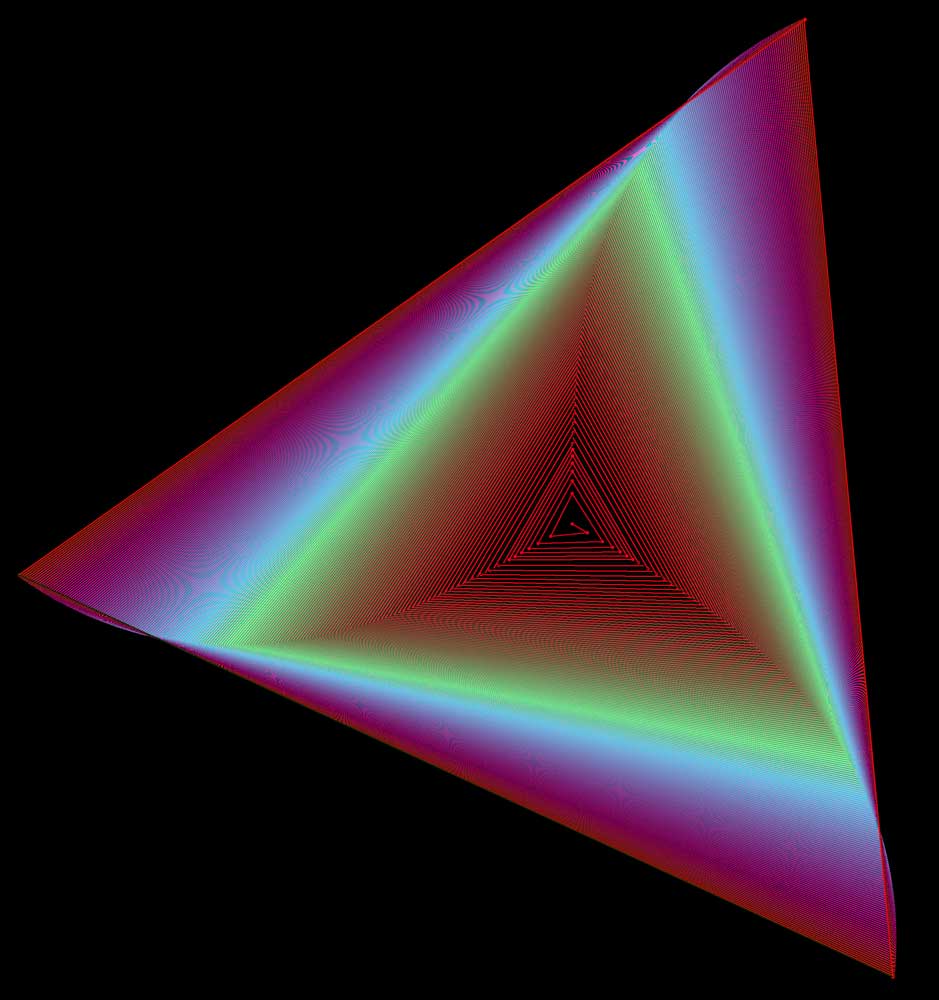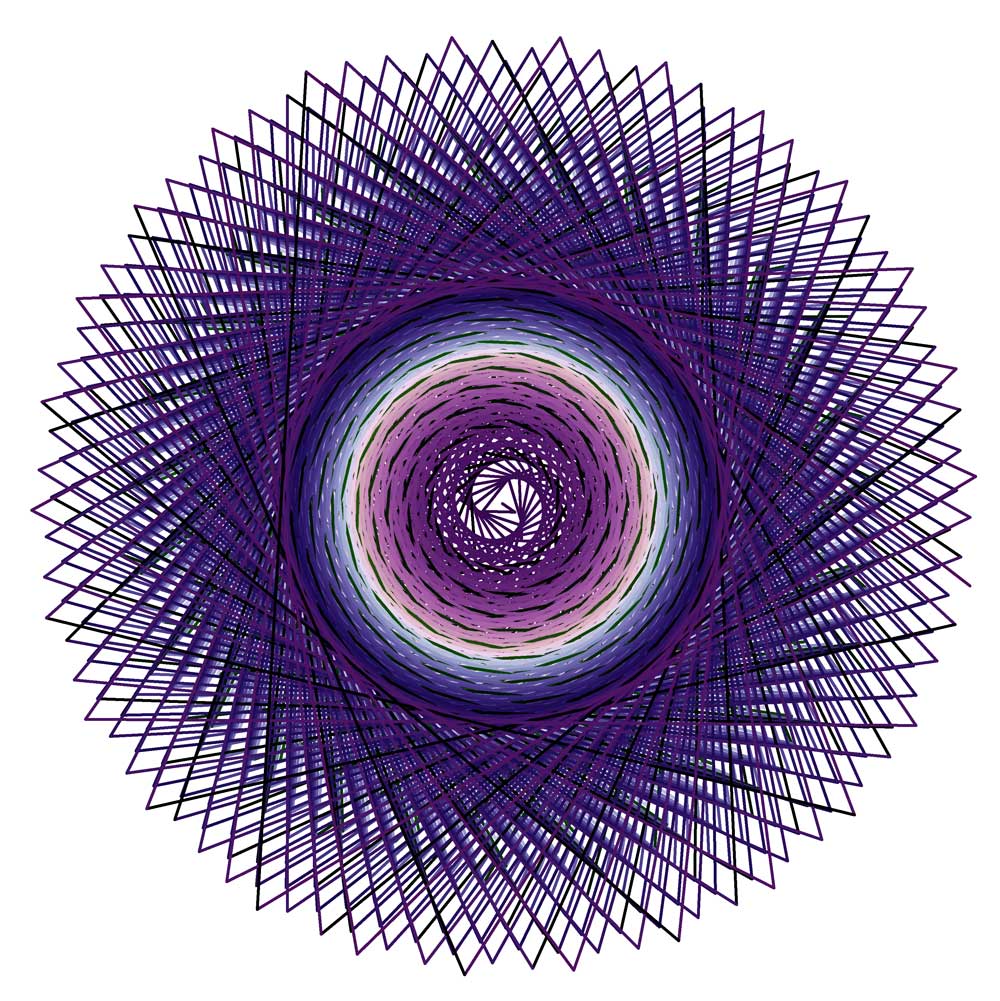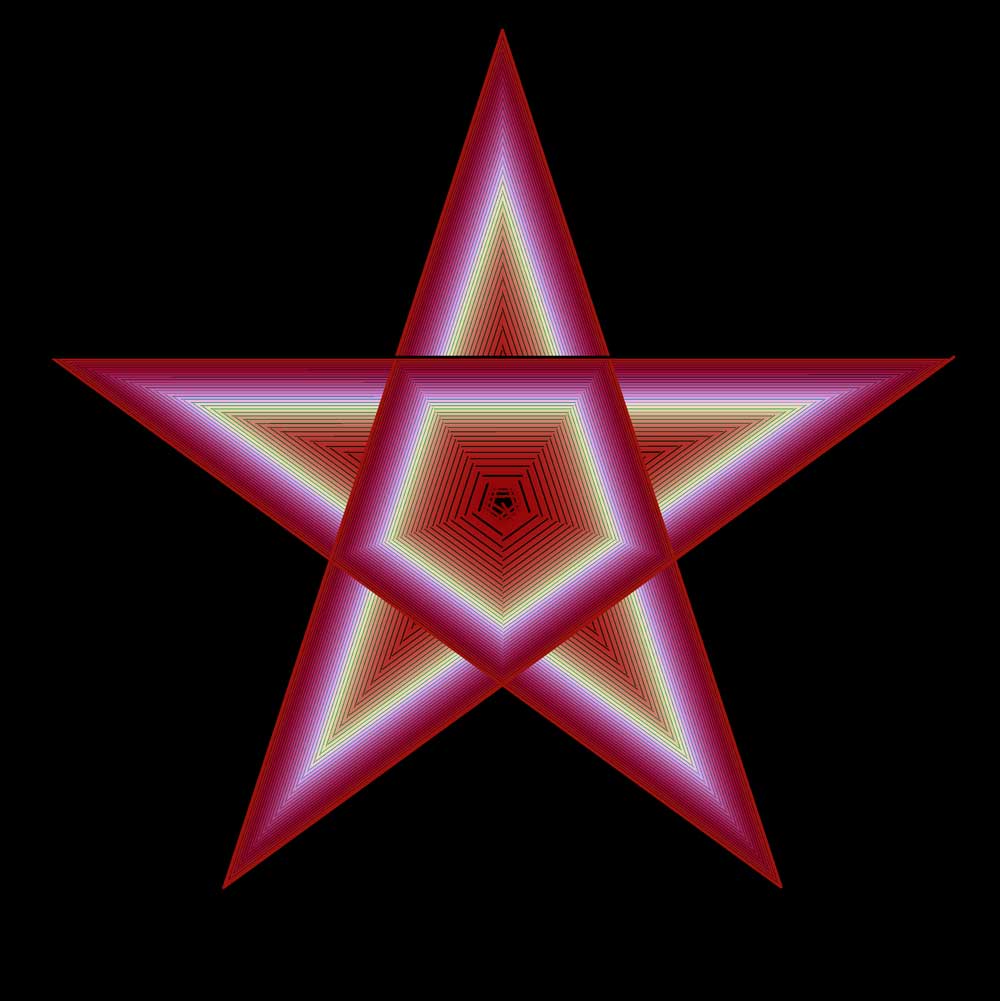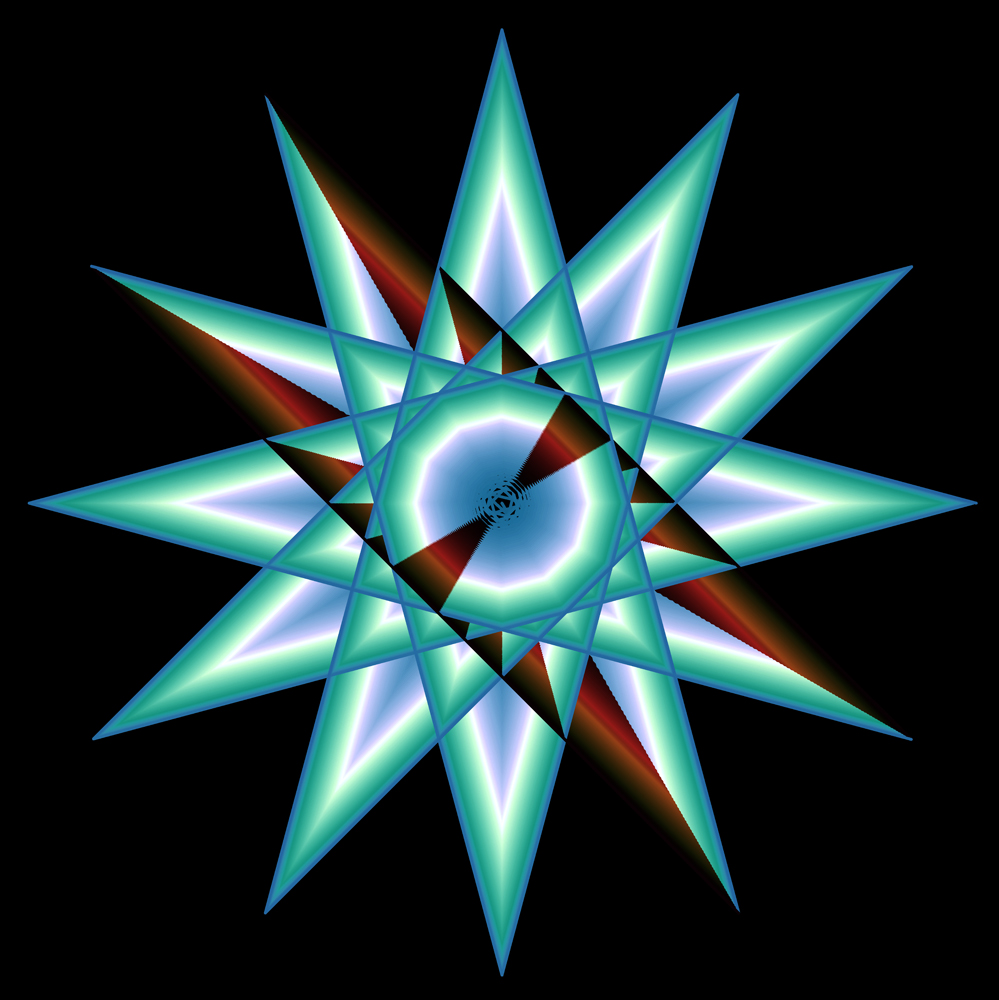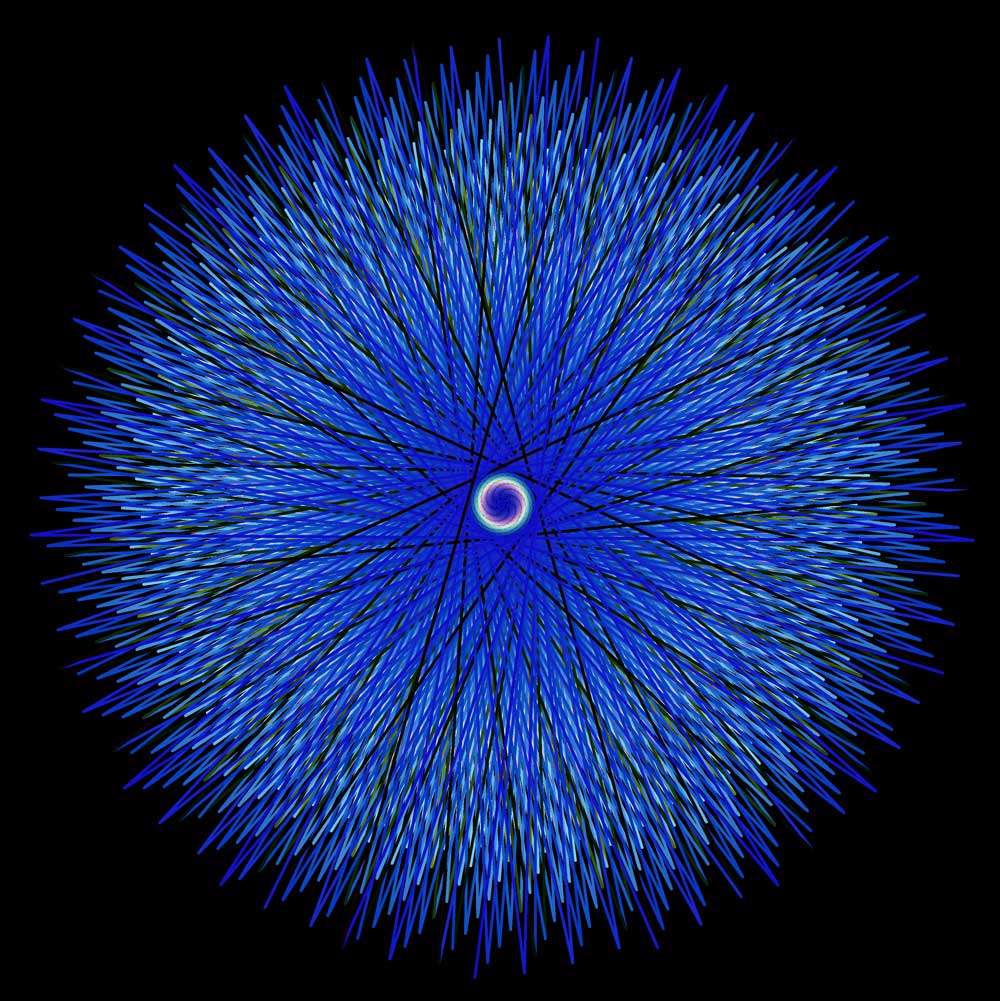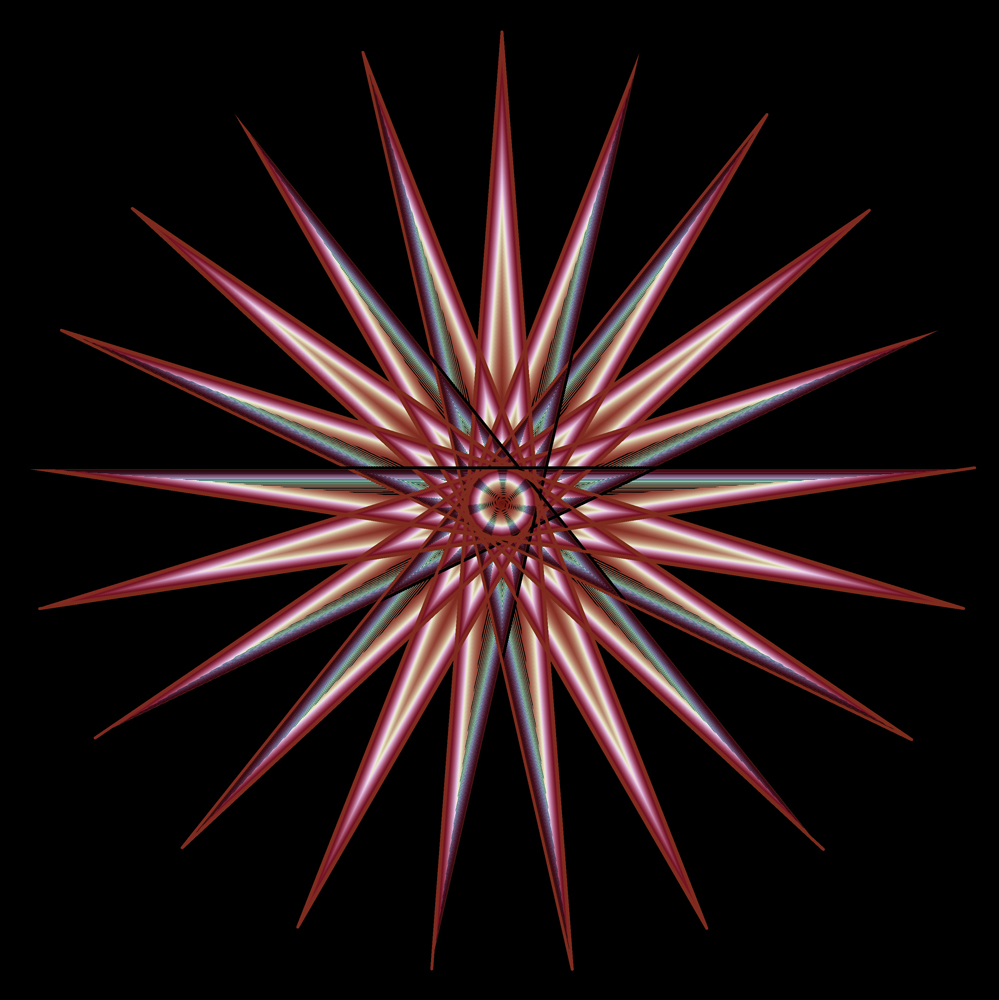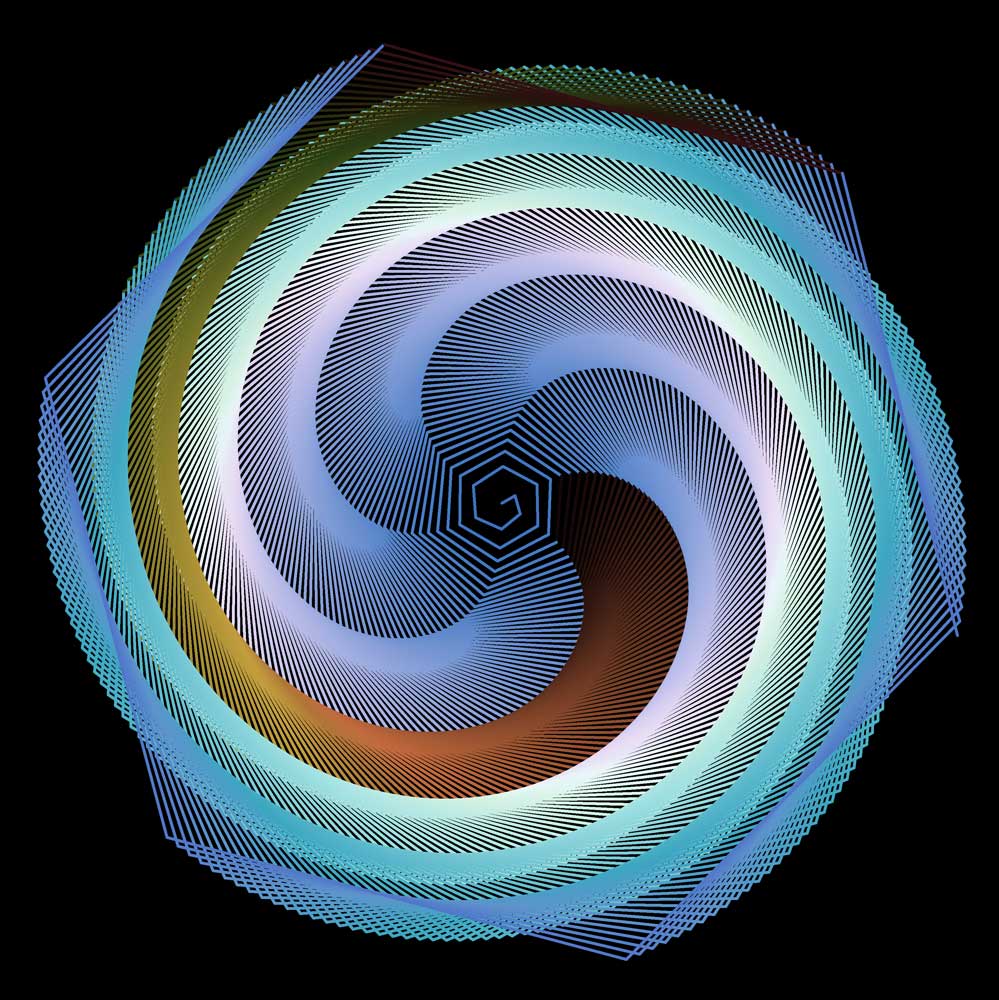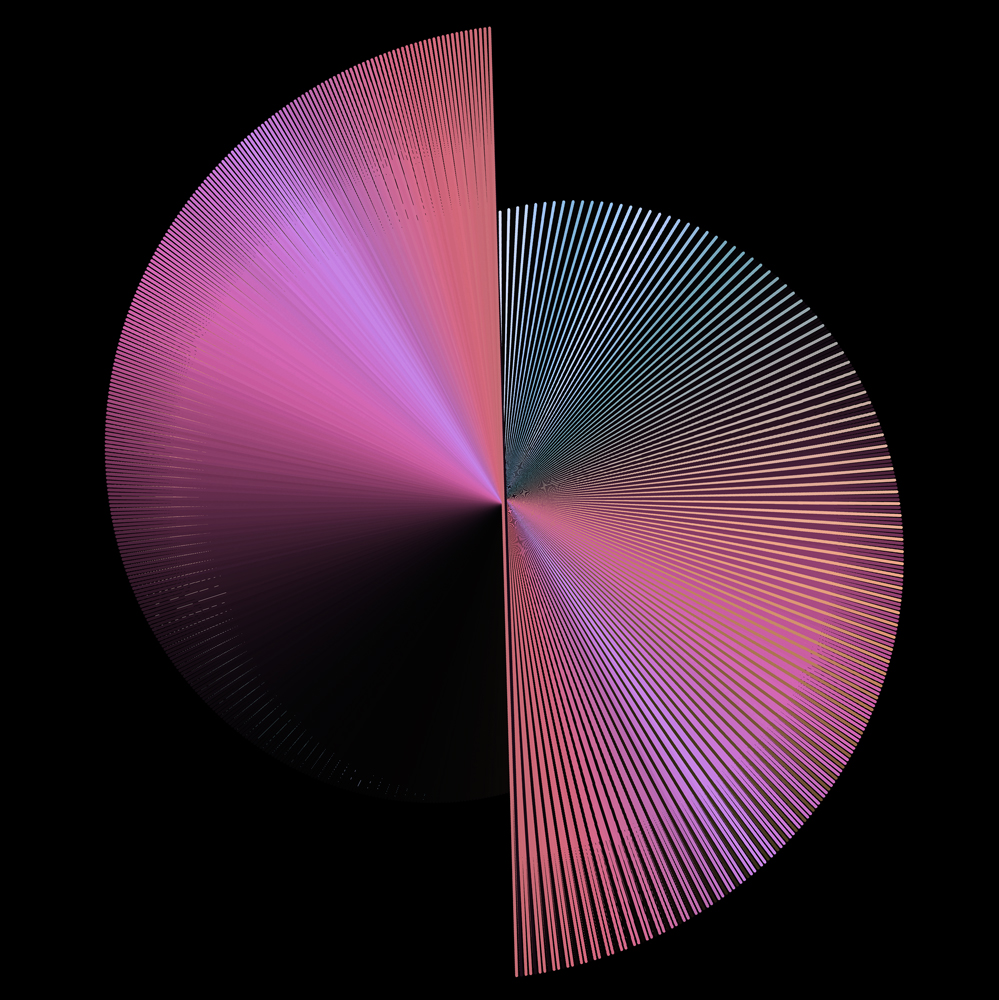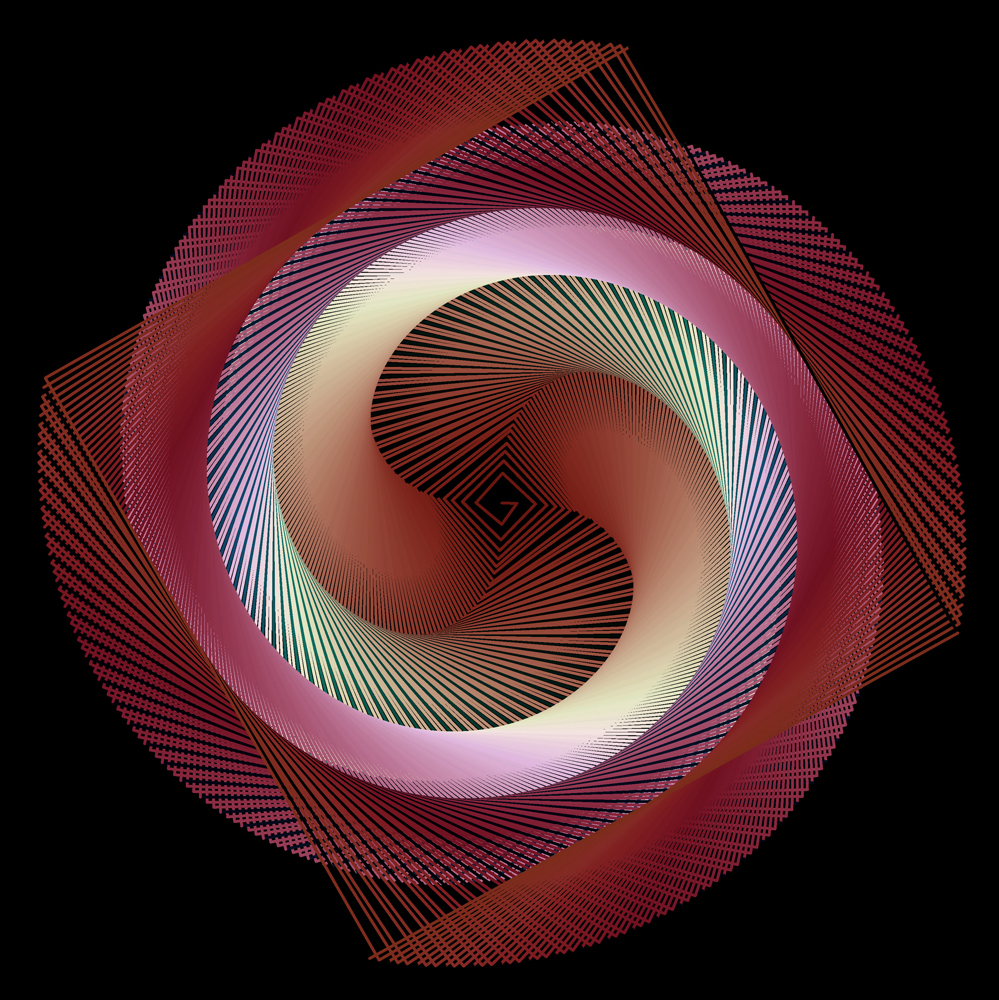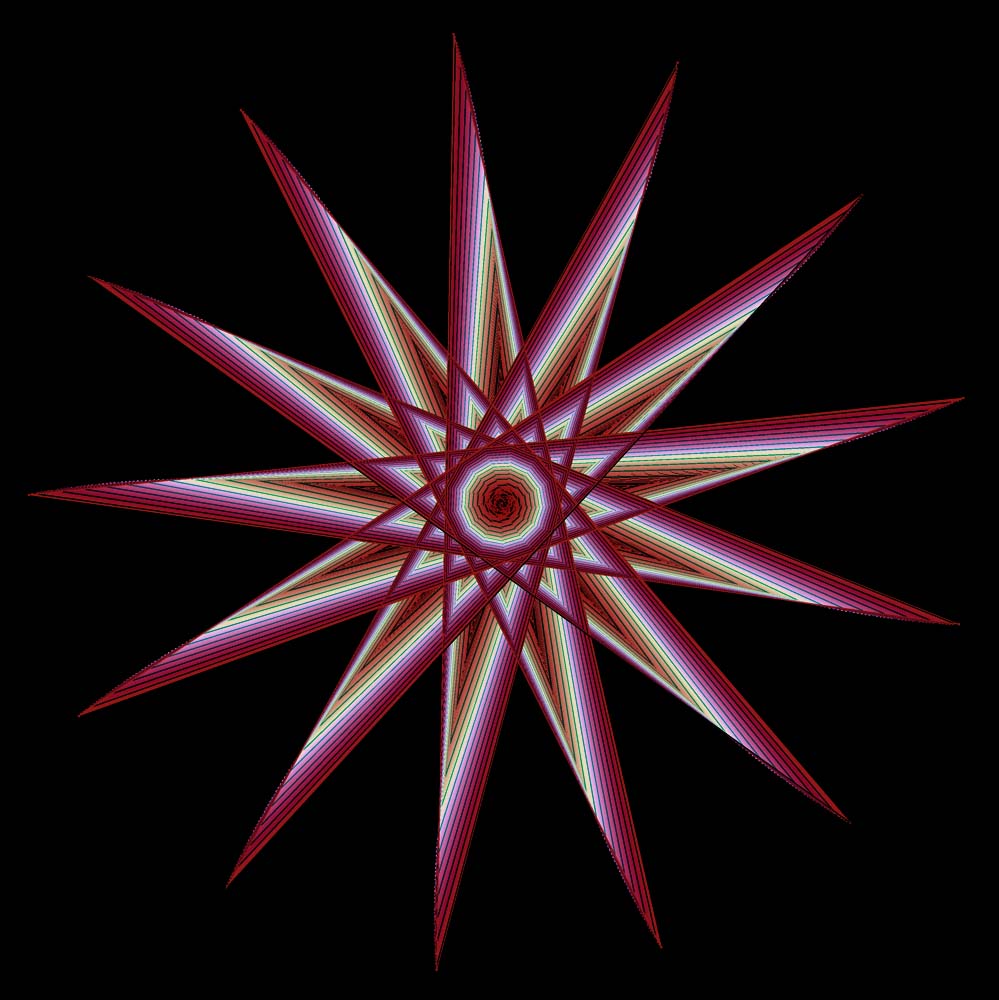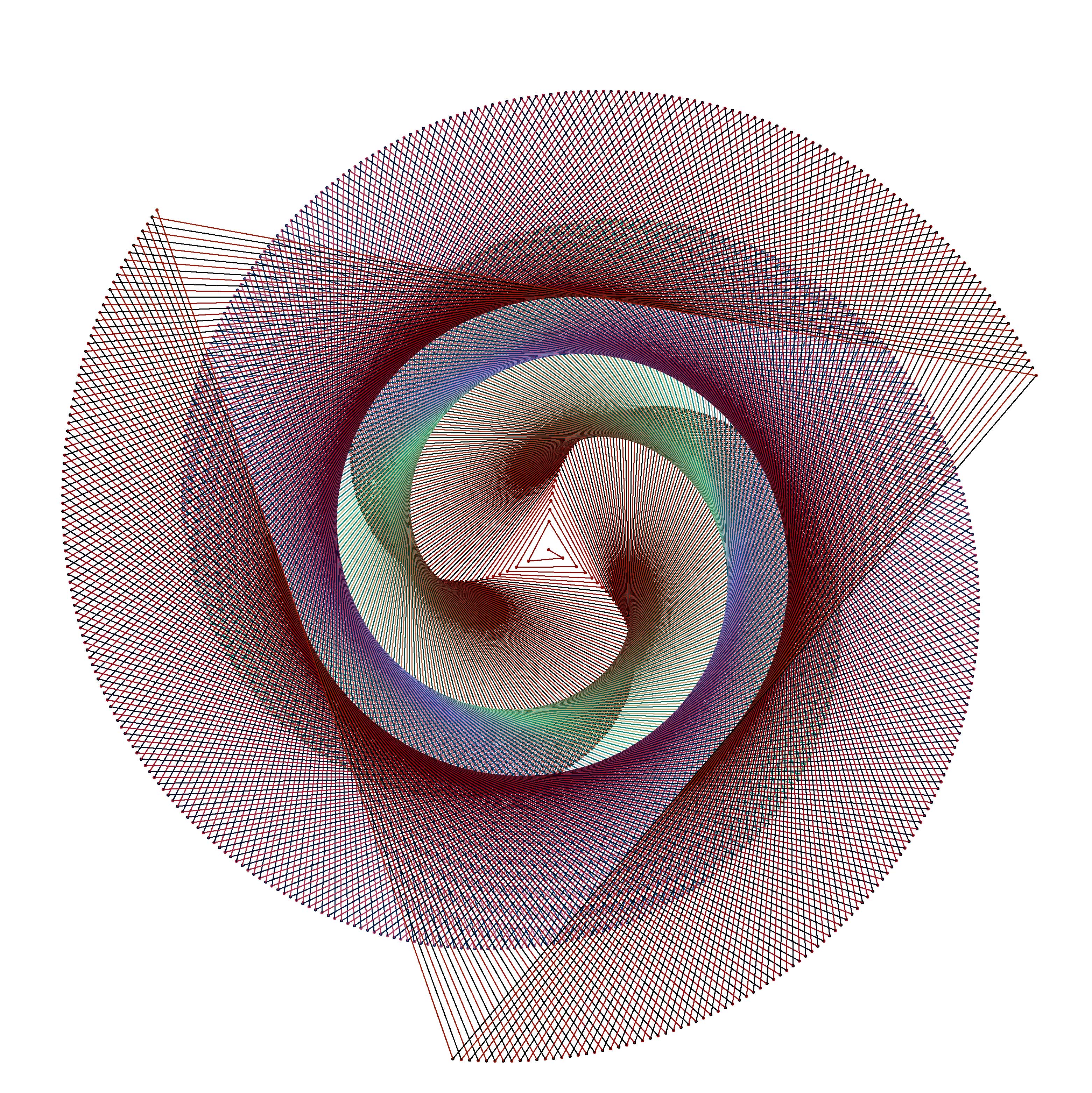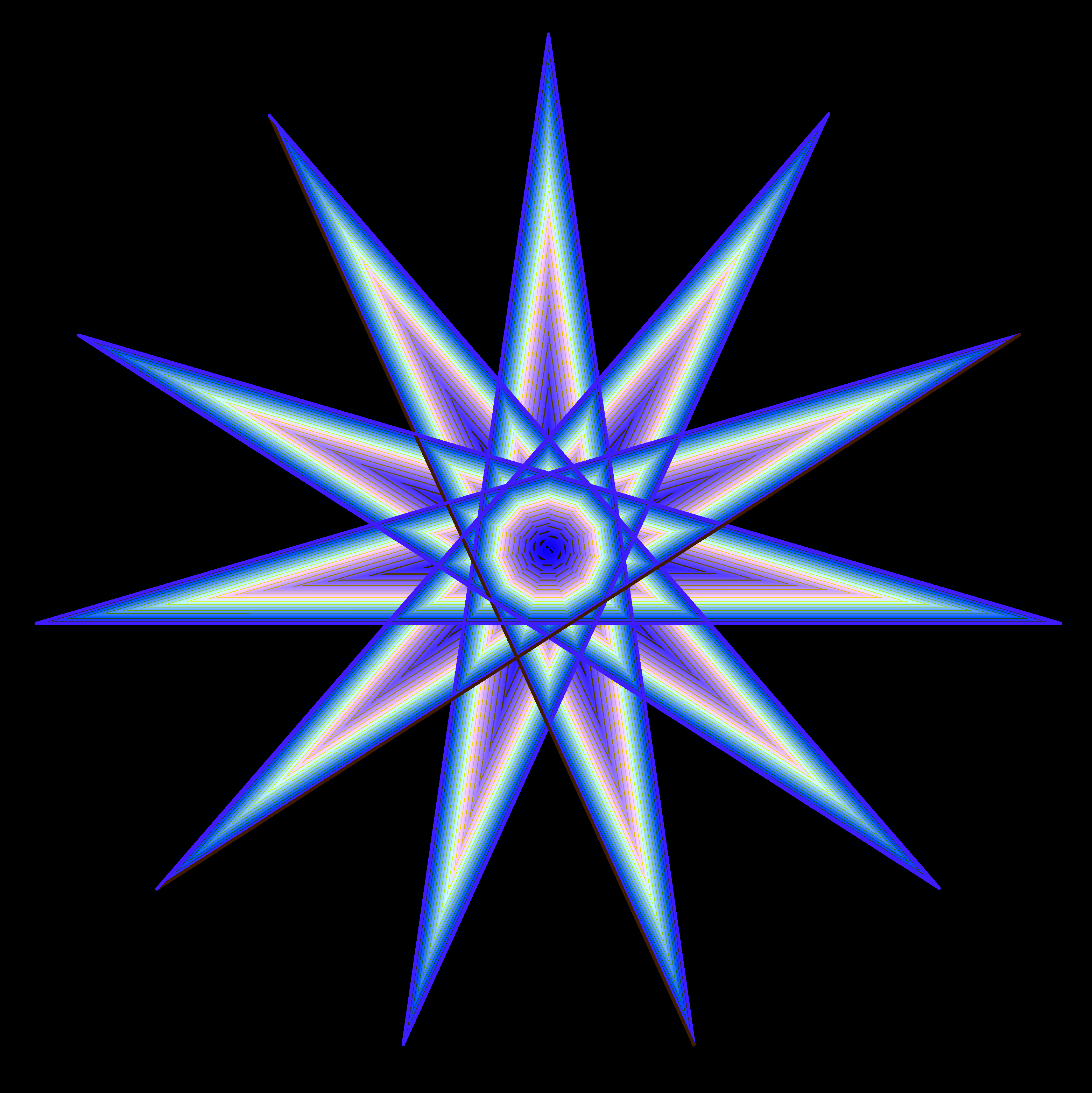I've been exploring the possibilities of a certain sort of spiral for a few months now. When I work on a series like this I work at two levels. One level is very abstract and my friend Sofia calls it a strange kind of pure math. That's what this essay is about (no equations involved :-). The other level is that I get visually excited by the forms I see and am move to use them as a starting point for making art.
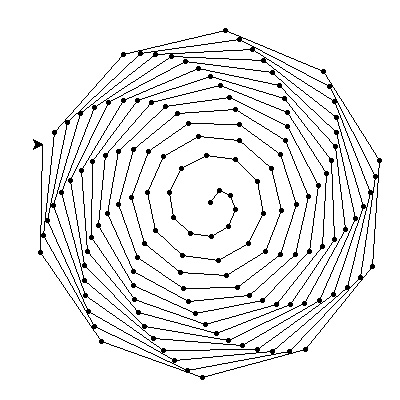
Here's a spiral. It's made by successively drawing dots and connecting them with lines. Imagine standing on flat sand with a stick in your hand. Make a dot on the sand at a certain distance away from the center. Now rotate around the center and make another dot the same distance away, joining successive dots with a line, until you've rotated through a full circle. Of course you will end up with a circle in the sand made of dots connected by lines. If you repeat that procedure but in crease the distance from the center of successive dots by a certain amount then you get a spiral like this.
There are many ways of increasing the radius of a spiral as you rotate (believe it or not). You can add a constant amount to the radius and get a spiral that expands by a constant amount. You can multiply the radius by a constant amount and get a spiral that expands more and more rapidly. For these spirals I use a function where radius is calculated by multiplying an arbitrary constant by the square root of the number of dots that have been placed.
If you trace along the arm of the spiral the successive dots are farther and farther apart. But the arms of the spiral are getting closer and closer together. This affects our visual system in an interesting way because we visually link things based on how close they are to each other. So the dots link visually to make meta-spirals. I call this sort of spiral a Fibonacci spiral.
?filename=
I got interested in this because I wrote a program that simulates the floret pattern in a flower like a daisy or sunflower. To do that you follow the procedure above with a turn of 137.5 degrees between each dot. I made a mistake in my initial code. It ran fine and made spirals, but they weren't like the center of a daisy. The amount of turning should have been stated in radians, not degrees. Very instructive error! Suddenly I had a big space of possibility to explore. The appearance of the final spiral depends on the angle that's turned between dots. So you can just make successive spirals with progressively changing turns. Since it's code then you can automate the whole process and let it run and pile up pictures in a folder while you go read the news.

This image shows a series of 21 pictures with a successively increasing turnings. The center image is the closest to simulating the center of a daisy. Interestingly, this set of pictures wouldn't make an animation because successive images are so diffent from each other. I've tried a similar sequence with a much smaller turning and saw similar discontinuities.
The colorscheme in these pictures is pretty arbitrary. Computer colors are generated by a triplet of numbers that specify intensities of red, green and blue color numbers that give a color space of about 16 billion distinct colors. I can step progressively through that space for each new dot or line. This brings out structure in the image that would otherwise be invisible. There was a bug in the function I used to step through the color space that brought out yet another level of structure so I called it a feature and left it alone.

Demo 1
I mentioned above how our perceptual system links things according to relative proximety. Demo1 gives a clear illustration of that. At the center there is a zone where no metaspirals are seen as in the line illustration above. Then 8 metaspirals emerge (with alternating colors due to the feature I mentioned above.) Then those metaspirals disappear and new metaspirals emerge (metametaspirals?) that curve less strongly but in the opposite direction. I conjecture that that process would continue until you end up with radial lines away from the center and lose the perception of metaspirals.

Demo 2
Demo 2 shows the metaspirals that happen when the turning is 137.5 degrees which is the amount that should simulate the florets on a daisy or sunflower. And it does do that visually .

Demo 3
Demo 2 only ran out to 500 dots. Demo 3 shows a detail of a run that went out to a couple of thousand dots. At the bottom right (which would be the center of the flower) the dots are closely packed. The characteristic counter spinning spirals that one sees in a daisy are apparent. But then radial lines start emerging and the perception of metaspirals is lost.
The process I'm simulating with computer code is implimented differently in a daisy. As the daisy center grows each floret emits a chemical signal. The next floret placed at the edge of the growing center is far enough around the circle that the signal is below a certain threshold. But then in a daisy, the florets change at a certain point and become petals. So I make a conjecture that in an actual daisy, that when the florets are no longer being closely packed that a genetic switch is thrown that causes a petal to be formed there instead of a floret.
I have a system that explores the possibility space of this sort of spiral. It's a possibility space that evolution seems to have explored since the pattern of florets seen in a daisy is also found in other flowers. Why don't we see all of those other patterns in nature? I think it's because the closest packing produced by the 137.5 degree turning is a more efficient use of resources than any other. Confesses to knowing nothing about what those resources might be in a daisy :-)

Demo 4
Demo 4 shows the 137.5 degree turning with small dots and the lines connecting successive dots visible taken out to ten dots. The lines joining successive dots on the spiral zigzag around the center in a starlike pattern.
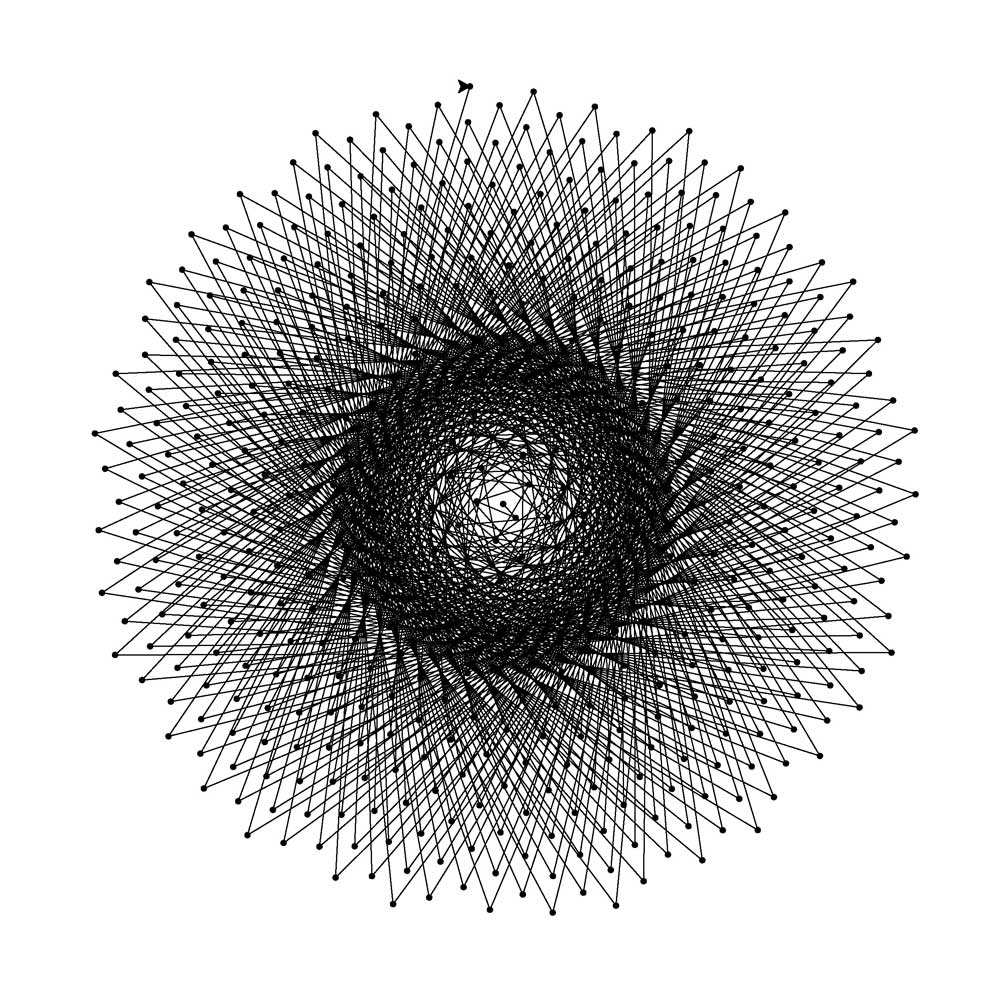
Demo 5
(Demo 5 shows the same pattern taken out to 500 dots.) Actually, rather than 137.5 degrees, my program uses 2.40482772311 radians. To my eye the packing isn't quite perfect, but I've tried to vary the turning by .000000000001 radians and the packing gets worse. I find the visual patterns that emerge to be quite fascinating.

Demo 6
If I set the turning to 120 degrees and turn on my coloring function I get a triangle like Demo 6.

This is a set of images produced using colored lines and the set of turnings that I used for the series of 21 spirals that I showed above.
I'm interested in cognition, how it is that we can perceive a meaning?filename=ful world and think and I find the visual experiences that this sort of work generates are like a direct probe of my underlying mechanisms. I'm also interested in chaos theory; the idea that determinism isn't always predictable. I know that these spirals age created by a completely determinisistic system. I wrote it after all. And yet the output is surprisingly complex and unpredictable. I'm trying to decide whether that is genuine chaos or just a product of the intractibility of a calculation.
